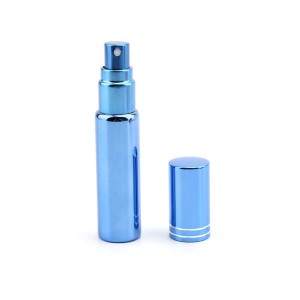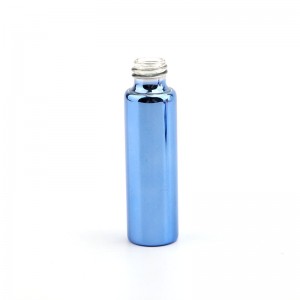Introduction:
Perfume bottles are not just containers for fragrances; they are also crafted with intricate designs and structures to enhance the overall user experience. In this article, we will explore the construction and components of a perfume bottle, shedding light on the fascinating world behind these elegant vessels.
1. Glass Bottle:
The primary material used for perfume bottles is glass. Glass bottles offer several advantages, including transparency, impermeability, and chemical resistance, which help preserve the fragrance for an extended period. The glass used in perfume bottles is typically made of high-quality materials like crystal or flint glass, ensuring durability and an appealing aesthetic.
2. Bottle Shape:
Perfume bottles come in various shapes and sizes, each designed to reflect the essence of the fragrance it contains. Common bottle shapes include rectangular, cylindrical, oval, and square. The shape of the bottle is carefully chosen to complement the fragrance’s theme and capture the attention of potential buyers.
3. Bottle Neck and Cap:
The neck of a perfume bottle is the narrow opening through which the fragrance is dispensed. It is usually made of glass or plastic and is meticulously designed to allow controlled, precise pouring or spraying. The cap, often made of metal or plastic, serves as a protective covering for the bottle’s neck to prevent leakage and evaporation of the perfume.
4. Sprayer or Pump Mechanism:
Many modern perfume bottles are equipped with a sprayer or pump mechanism, allowing easy application of the fragrance. This mechanism consists of a tube that extends into the bottle, reaching the fragrance, and a nozzle that disperses the perfume when pressed. The sprayer or pump mechanism is an essential component that ensures convenience and precise dispensing of the fragrance.
5. Decorative Elements:
Perfume bottles are known for their elaborate and ornate designs. Decorative elements such as engravings, embossments, and labels are added to enhance the bottle’s visual appeal and convey the brand’s identity. These elements often reflect the fragrance’s inspiration, be it floral, oriental, or modern, and contribute to the overall aesthetic value of the perfume bottle.
Conclusion:
Perfume bottles are not merely functional containers but works of art that encapsulate the essence of the fragrance they hold. From the choice of glass to the intricacies of the sprayer mechanism, every component is carefully designed to enhance the user experience and showcase the brand’s creativity. Understanding the construction and components of perfume bottles allows us to appreciate the craftsmanship behind these elegant vessels and the attention to detail that goes into creating the perfect fragrance presentation.
Post time: Jul-28-2023

